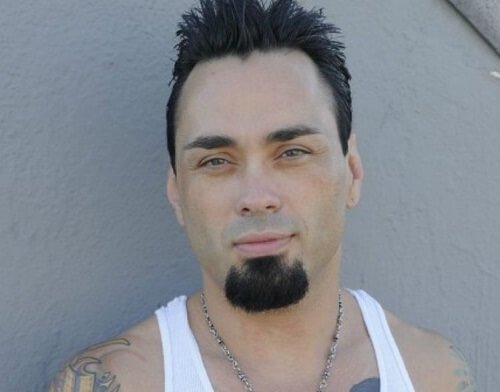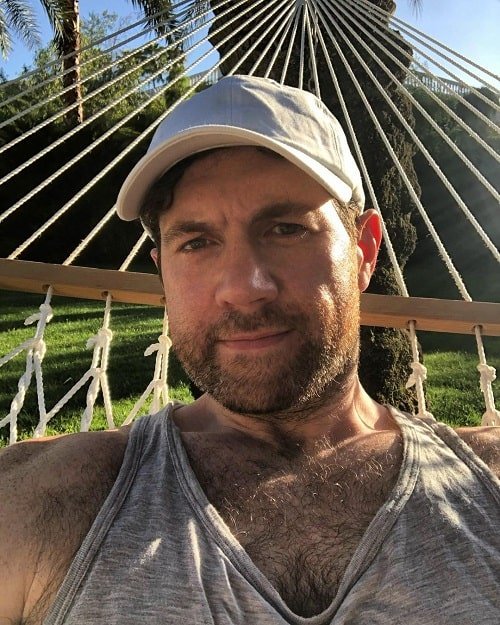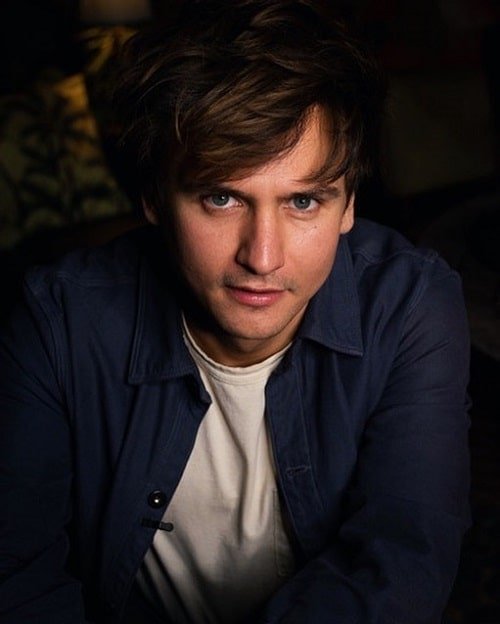Eddie Bravo Biography and Life Story
In this article, here is the full details of Eddie Bravo about wiki, biography, date of birth, birthplace, zodiac sign, nationality, hometown, age, height, weight, father, mother, family, girlfriend, wife, relationship status, children, profession, education, career, net worth, facts, Wikipedia, and many more.

Introduction
Eddie Bravo is a name synonymous with innovation in Brazilian Jiu-Jitsu (BJJ). Widely regarded as one of the most influential figures in modern BJJ, Bravo’s contributions to the sport have revolutionized how athletes approach grappling. His creative approach to training, coupled with his groundbreaking development of the 10th Planet Jiu-Jitsu system, has made him a trailblazer in the martial arts community. From his humble beginnings to becoming a respected figure in both BJJ and mixed martial arts (MMA), Bravo’s life story is one of perseverance, innovation, and dedication to martial arts.
This article will take a deep dive into the life and career of Eddie Bravo, exploring his early life, his path into martial arts, the creation of the 10th Planet Jiu-Jitsu system, his notable achievements, and his continued influence on the sport today.
Early Life and Background
Edward Lee Bravo was born on May 15, 1970, in Santa Ana, California, to a working-class family. Raised in Southern California, Eddie’s childhood was influenced by a variety of interests, from music to sports, but he eventually found his calling in martial arts. From a young age, Bravo exhibited a competitive spirit, and he began training in different disciplines to improve his athleticism and mental focus.
As a teenager, Bravo developed a fascination with martial arts, particularly after seeing a BJJ match on television. Inspired by the technique and discipline involved, he sought out a way to learn the art. At the age of 23, Bravo began training in BJJ under Jean Jacques Machado, one of the most respected figures in the sport at the time. Machado, a direct descendant of the famous Gracie family, provided Bravo with a strong foundation in traditional BJJ techniques.
Although Bravo initially began training in BJJ, he also had a keen interest in other martial arts. As his skills progressed, he trained in various striking and wrestling disciplines to become a more well-rounded athlete. His diverse background in both grappling and striking would later contribute to his success as a coach and practitioner.
Eddie Bravo’s Rise in Brazilian Jiu-Jitsu
Bravo’s dedication to BJJ quickly paid off, and he began making a name for himself within the community. He earned his blue belt in BJJ after only one year of training, a remarkable achievement given the technical nature and rigor of the discipline. By 1999, Bravo had achieved his purple belt and was already becoming well-known for his unorthodox style and creative approach to the sport.
In 2003, Bravo cemented his reputation as an innovator in the world of Brazilian Jiu-Jitsu when he competed in the prestigious ADCC World Championship (Abu Dhabi Combat Club). This was a significant moment in his career, as he became the first person to submit Royler Gracie, a member of the legendary Gracie family and one of the most accomplished practitioners in BJJ history. Bravo’s victory over Gracie in the 2003 ADCC competition was a milestone that earned him global recognition.
What made Bravo’s submission so unique was his application of the “rubber guard,” a position he had developed through his own experimentation with BJJ techniques. The rubber guard is a highly flexible position that allows the practitioner to control the opponent from the bottom, setting up submissions such as the gogoplata, an armbar, or a triangle choke. Bravo’s creativity in developing new positions like the rubber guard made him a standout figure in the BJJ world, and his submission victory over Royler Gracie became a defining moment in his career.
Following his success at the ADCC World Championship, Eddie Bravo became a prominent figure in the Brazilian Jiu-Jitsu community. His unique style and techniques continued to challenge traditional BJJ norms, and his reputation as an innovator and a practitioner continued to grow.
The Birth of 10th Planet Jiu-Jitsu
One of Bravo’s most significant contributions to Brazilian Jiu-Jitsu is the creation of the 10th Planet Jiu-Jitsu system. In the years following his success in competition, Bravo realized that there were certain positions and strategies in traditional BJJ that he could improve upon. He wanted to create a system that was adaptable to the evolving nature of mixed martial arts and capable of allowing practitioners to compete at the highest levels, especially in the no-gi format.
In 2003, Eddie Bravo opened his first 10th Planet Jiu-Jitsu academy in Los Angeles. The academy was founded on Bravo’s belief that Brazilian Jiu-Jitsu could evolve and adapt, and his system was designed to be a modern interpretation of the art. The 10th Planet system focuses on no-gi techniques, which is a style of BJJ where practitioners do not wear the traditional gi (kimono). Instead, competitors wear rash guards and shorts, which makes the sport more dynamic and fluid, as grips on the clothing are no longer allowed.
The 10th Planet system places a heavy emphasis on positions and transitions that are specifically designed for no-gi competition. The rubber guard, which Eddie Bravo developed, became one of the signature techniques of the 10th Planet system. Other key components of the 10th Planet system include the lockdown, the truck, and the twister, all of which are designed to control an opponent while setting up submissions.
Bravo’s 10th Planet Jiu-Jitsu system was initially met with skepticism from traditional BJJ practitioners, but over time it gained recognition and respect for its innovative approach to grappling. Today, the 10th Planet system has grown into an international network of academies, with hundreds of students training under Eddie Bravo’s guidance.
Contributions to Mixed Martial Arts (MMA)
In addition to his contributions to Brazilian Jiu-Jitsu, Eddie Bravo has also made a significant impact in the world of mixed martial arts (MMA). Bravo’s focus on no-gi BJJ made him a natural fit for the MMA world, where competitors often need to rely on grappling techniques without the use of a gi. As the sport of MMA has evolved, Bravo’s techniques have become an integral part of many fighters’ arsenals.
One of the most well-known fighters to train under Eddie Bravo is UFC fighter Tony Ferguson, who has achieved considerable success in the lightweight division. Ferguson’s unorthodox fighting style and mastery of Bravo’s 10th Planet Jiu-Jitsu system have made him one of the most exciting and unpredictable fighters in the UFC. Bravo’s influence on Ferguson’s career is evident, as Ferguson has used techniques like the rubber guard, twister, and other 10th Planet strategies in his MMA fights.
Bravo has also worked with numerous other MMA fighters, providing them with grappling training that focuses on controlling their opponents and setting up submissions in live, high-pressure situations. His no-gi techniques, especially in transitions and sweeps, have helped many fighters dominate their opponents in MMA competitions.
In addition to working with professional fighters, Bravo has also become a respected commentator and analyst in the world of MMA. His insights into the grappling aspects of MMA are highly regarded, and he is frequently called upon to provide expert commentary for major events.
Controversies and Criticism
While Eddie Bravo is widely respected for his contributions to Brazilian Jiu-Jitsu and mixed martial arts, he has not been without controversy. His unorthodox approach to BJJ, as well as his outspoken personality, has led to some criticism from traditional BJJ practitioners and martial artists.
Bravo’s rivalry with certain members of the BJJ community has been widely discussed, especially in relation to his rejection of the traditional gi-based BJJ system. Many traditionalists view Bravo’s no-gi approach as a departure from the roots of the sport, and some have been critical of his methods. However, Bravo has always defended his style and philosophy, arguing that evolution is necessary for the growth of the sport.
Additionally, Bravo has made headlines for his views on other topics, such as conspiracy theories and his stance on martial arts training. While his opinions have sparked debate, his achievements in BJJ and MMA remain undeniably impressive, and his influence on the sport cannot be overlooked.
Legacy and Impact
Eddie Bravo’s legacy in Brazilian Jiu-Jitsu and mixed martial arts is secure. Through his development of the 10th Planet Jiu-Jitsu system, Bravo has changed the way people approach grappling and submission techniques. His innovation, dedication, and passion for martial arts have made him one of the most influential figures in the world of combat sports.
Bravo’s influence extends beyond his own academy and students. His system has inspired countless athletes to adopt no-gi BJJ as their primary focus, and many fighters in MMA now incorporate Bravo’s techniques into their training. The 10th Planet system has become a major force in both BJJ and MMA, and its impact will continue to shape the future of combat sports for years to come.
Furthermore, Eddie Bravo’s story is one of perseverance and dedication. From his humble beginnings to becoming a global icon in martial arts, Bravo’s journey serves as an inspiration to anyone looking to make an impact in their chosen field. His creative approach to Brazilian Jiu-Jitsu has shown that even in a discipline as traditional as BJJ, there is always room for innovation and growth.
Conclusion
Eddie Bravo’s journey from a young man with a passion for martial arts to a pioneering figure in Brazilian Jiu-Jitsu is a testament to the power of innovation, perseverance, and dedication. Through his creation of the 10th Planet Jiu-Jitsu system, Bravo has left an indelible mark on the world of grappling and mixed martial arts. His unique approach to BJJ has inspired a generation of practitioners and fighters, and his legacy will continue to shape the sport for many years to come.
Bravo’s contributions to BJJ and MMA have not only revolutionized the way athletes train but have also shown that there is always room for creativity and innovation in the world of martial arts. His impact on the sport is undeniable, and his story serves as an inspiration to anyone who dares to challenge the status quo and push the boundaries of what is possible.
Stay connected with the wikimavani to know more about other trending personalities the wiki, biography, date of birth, birthplace, zodiac sign, nationality, hometown, age, height, weight, father, mother, family, boyfriend, husband, girlfriend, wife, relationship status, children, profession, education, career, net worth, facts, Wikipedia, and many more.





